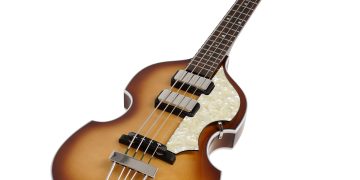 In the second part of his exclusive feature for MMR Global, in-store marketing expert and retail consultant Corin Birchall, one of the UK industry’s foremost and experienced thought leaders on using the right sales techniques in MI storest tells you how to sell the stock with the bigger price tags…
In the second part of his exclusive feature for MMR Global, in-store marketing expert and retail consultant Corin Birchall, one of the UK industry’s foremost and experienced thought leaders on using the right sales techniques in MI storest tells you how to sell the stock with the bigger price tags…
In part one, we explored techniques to sell more add-on products. In this post we will look at selling higher priced items.
In many music stores, a customer stating that they wanted to learn piano, drums or guitar would be shown an entry level product or a starter pack first. We know this, because we have tested it. The initial product presented would be accompanied by the phrase “our pianos start from…”.
There is no correlation between “I want to learn…” and low priced or entry level product. This correlation is created only in the mind of the salesman.
In the UK we have seen a recent resurgence in adult bicycle sales. It has been triggered by continual reminders of UK obesity in adult males and the success of the British cycling team in international competition. Men deciding to take up cycling look to our athletic champions for the cycles they use, not Toys R Us for entry level priced models. They are asking themselves, what do the best use?
Similarly, as someone looking to develop my skills in video, I did my research looking at what established video bloggers used, rather than what price video setups started from.
An experienced music sales guy shared an approach to this, that worked particularly well. “Ok you want to learn guitar, where do you want to get to? The top of the ladder, be a rock star? The further up the top of the ladder you start, the closer to the top you will be!”
In summary, all customers want the best. The best product or solution they can afford.
The second aspect of selling up is actually a little contrary. It’s actually selling down. I believe in many instances we should start at the top and come down, rather than try and sell up. Why? It’s much easier to come down than it is to sell up.
If you go into a new car dealership, do you think they will sit you in the bottom of the range model of a new car? It’s unlikely, you will sit in the top of the range model and you will feel the pain getting to your price budget, at this point you’ll be listening to a Long Wave Radio and be winding your windows open by hand. We fall in love with the features of the premium model and don’t want to lose them.
Clearly if a customer gives an explicit budget, I’m looking to spend $1000 on a guitar you cannot ignore this. But where a budget is not expressed, don’t be afraid to sit them at a premium product. During my time at Roland, we would train piano salespeople to start customers on our flagship pianos. Many customers had no idea what a digital piano could do, let alone whether they would value it. We would say “Ignore the price for one moment, let me show you this piano, it has all the latest features, we can establish which ones are important to you and work down from there”.
Some research into the first price we see is also relevant. A store with two entrances tried an experiment. If we had a value offer at one entrance and a premium offer at the other, what would be the impact on customer spend, based on the entrance they used. The results were staggering. Having tracked customers based on where they entered and what they spent, those who saw the premium offer first spent 60% more on average. This first price we see becomes the price anchor by which every other price is compared.
A $3,000 drum kit can be expensive or a bargain when compared to something else. The key factor is what you let them compare the product to first!
Corin Birchall is a retail and marketing consultant. He is the founder of retail consultancy Kerching Retail. You can connect with Corin at: Facebook.com/kerchingretail; Twitter.com/corin_kerching; email him at corin@kerchingretail.com or visit www.kerchingretail.com/music-retail

























Looking Back on 2025: A Year of Controlled Chaos (Emphasis on “Controlled”)